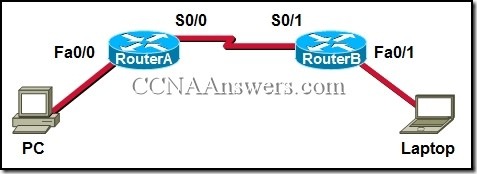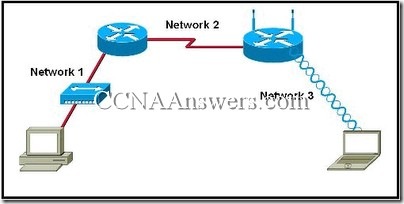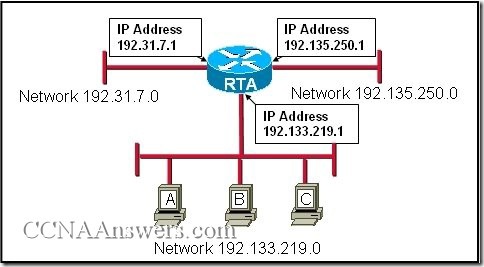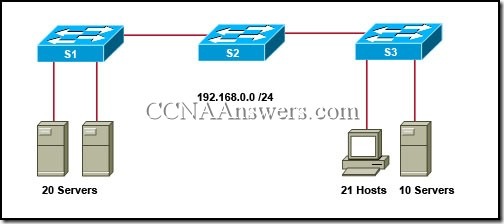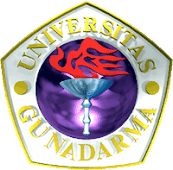backbone cable
horizontal cable
patch cable
work area cable
2. In most business LANs, which connector is used with twisted-pair networking cable?
BNC
RJ-11
RJ-45
Type F
3. When is a straight-through cable used in a network?
when connecting a router through the console port
when connecting one switch to another switch
when connecting a host to a switch
when connecting a router to another router
4. With the use of unshielded twisted-pair copper wire in a network, what causes crosstalk within the cable pairs?
the magnetic field around the adjacent pairs of wire
the use of braided wire to shield the adjacent wire pairs
the reflection of the electrical wave back from the far end of the cable
the collision caused by two nodes trying to use the media simultaneously
5. Which OSI layer is responsible for binary transmission, cable specification, and physical aspects of network communication?
Presentation
Transport
Data Link
Physical
6. An installed fiber run can be checked for faults, integrity, and the performance of the media by using what device?
light injector
OTDR
TDR
multimeter
7. XYZ Company is installing new cable runs on their data network. What two types of cable would most commonly be used for new runs? (Choose two.)
coax
Cat4 UTP
Cat5 UTP
Cat6 UTP
STP
8. What is a possible effect of improperly applying a connector to a network cable?
Data will be forwarded to the wrong node.
Data transmitted through that cable may experience signal loss.
An improper signaling method will be implemented for data transmitted on that cable.
The encoding method for data sent on that cable will change to compensate for the improper connection.
9. What are three measures of data transfer? (Choose three.)
goodput
frequency
amplitude
throughput
crosstalk
bandwidth
10.
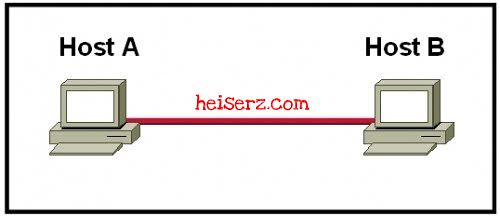
Refer to the exhibit. Which type of Category 5 cable is used to make an Ethernet connection between Host A and Host B?
coax cable
rollover cable
crossover cable
straight-through cable
11. In LAN installations where potential electrical hazards or electromagnetic interference may be present, what type of media is recommended for backbone cabling?
coax
fiber
Cat5e UTP
Cat6 UTP
STP
12. Which fiber connector supports full duplex Ethernet?

13. Which method of signal transmission uses radio waves to carry signals?
electrical
optical
wireless
acoustic
14. Which characteristics describe fiber optic cable? (Choose two.)
It is not affected by EMI or RFI.
Each pair of cables is wrapped in metallic foil.
It combines the technique of cancellation, shielding and twisting to protect data.
It has a maximum speed of 100 Mbps.
It is the most expensive type of LAN cabling.
15. Which of the following is a characteristic of single-mode fiber-optic cable?
generally uses LEDs as the light source
relatively larger core with multiple light paths
less expensive than multimode
generally uses lasers as the light source
16. What is considered a benefit of wireless as a media choice?
more host mobility
lower security risks
reduced susceptibility to interference
less impact of the surroundings on the effective coverage area
17. Compared with UTP cable, what extra characteristic of STP cable helps reduce the effects of interference?
the metal braiding in the shielding
the reflective cladding around core
the twisting of the wires in the cable
the insulating material in the outer jacket
18. What is a primary role of the Physical layer in transmitting data on the network?
create the signals that represent the bits in each frame on to the media
provide physical addressing to the devices
determine the path packets take through the network
control data access to the media
19. When is a rollover cable used in a network?
for connecting a host to a Fast Ethernet port on a switch
for connecting a router to another router
for connecting two routers through their AUX ports
for connecting to a switch through its console port
20. What is a purpose of the physical layer in data communication?
to wrap data packets into frames
to make sure that MAC addresses are unique in each frame
to control the access sequence of frames to the transmission media
to convert a frame into a series of signals to be transmitted on the local media
21. Which data communications standard provides broadband access in a wireless network?
GSM
Wi-Fi
WiMAX
Bluetooth
22. A customer installs a wireless access point at home in the closet next to the kitchen. The customer mentions that the wireless communication performance seems degraded when the cordless phone or the microwave oven is in use. What is the possible reason for this degradation?
The access point is close to walls.
The cordless phone joins the WLAN and shares the available bandwidth.
The wireless signal is in the same radio frequency range as the household devices are in.
The access point is on the same electrical circuit as the phone base unit and microwave oven are.
The surge of electricity when a microwave oven is in use disrupts the operation of the access point.
23.
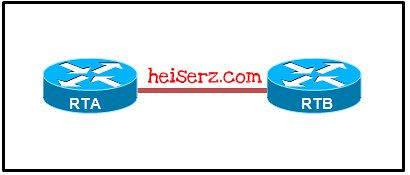
Refer to the exhibit. Which type of Category 5 cable is used to make an Ethernet connection between router RTA and router RTB?
coax cable
rollover cable
crossover cable
straight-through cable
24. Which OSI layer is responsible for managing optical signals used for data communication?
presentation
data link
transport
physical
25. Which connector is used with twisted-pair cabling in an Ethernet LAN?
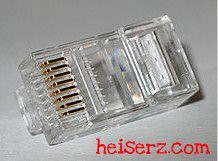
source : http://heiserz.com





